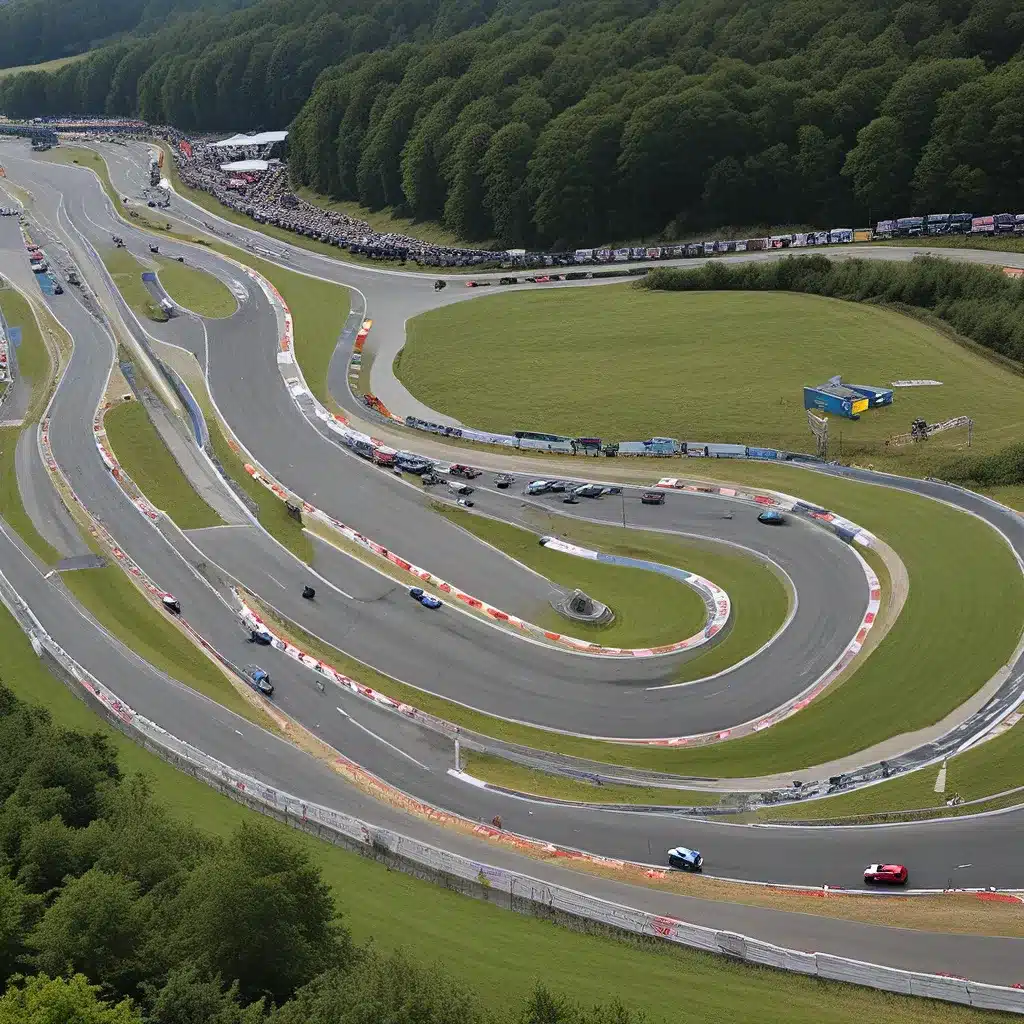
The Beginnings of Brands Hatch
Brands Hatch Circuit has a long and storied history that dates back to its humble origins as a dirt track used for cross-country cycling and motorcycling events. Located in the picturesque village of Fawkham, Kent, the circuit’s development was initially slowed by the impact of World War II, which saw the site used as a parking area for military vehicles, resulting in bombing strikes that damaged the infrastructure.
It wasn’t until 1950 that the circuit was finally surfaced with tarmac, transforming it into a one-mile oval that became the stage for Formula Three racing throughout the early 1950s. The mid-1950s saw further improvements, including the addition of Druids Bend, a pit lane, and spectator areas, as the circuit’s layout began to take shape.
The Rise of Brands Hatch as a Formula One Venue
The 1956 season marked a significant milestone for Brands Hatch, as it hosted its first Formula Two race. This paved the way for the circuit’s eventual hosting of its first Formula One race in 1960, a non-championship Silver City Trophy event won by the legendary Jack Brabham of Australia.
Following the sale of the circuit to Grovewood Securities, negotiations were held with the RAC (Royal Automobile Club) to have the British Grand Prix alternate between Brands Hatch and Silverstone each year. These negotiations were successful, and on July 11, Brands Hatch hosted its first Formula One championship race, which was widely considered a success.
However, the circuit’s history with Formula One racing was not without its challenges. Between 1964 and 1986, the British Grand Prix alternated between Brands Hatch and Silverstone, but the Brands Hatch events were marred by the tragic deaths of four drivers from the mid-1960s to the early 1970s. This, in turn, led to modifications being made to the circuit to improve safety.
The Evolving Layout of Brands Hatch
Brands Hatch’s circuit layout has undergone several transformations over the years. The current Grand Prix layout spans a distance of 2.301 miles, while the Indy layout is slightly shorter at 1.98 miles. The circuit’s undulating terrain and sweeping turns have become iconic, with the Paddock Hill Bend being one of the few overtaking spots on the track.
The Grand Prix layout begins with the Brabham Straight, followed by the treacherous Paddock Hill Bend, a right-hand turn that leads to the uphill Hailwood Hill. Drivers then navigate the Druids Bend, a right-hand hairpin, before descending towards the Graham Hill Bend and the Cooper Straight, which runs parallel to the Brabham Straight.
The Surtees turn, a long left-handed sweep that climbs uphill, leads drivers into the Pilgrims Drop and the Hawthorn Hill, where they must brake carefully to prepare for the Hawthorn Bend, a long right-handed turn that starts the loop back around the forest.
The circuit’s other notable features include the Derek Miner Straight, the Westfield Bend, the Dingle Dell complex, and the Clark Curve, all of which contribute to the circuit’s challenging and engaging character.
The Challenges and Controversies of Brands Hatch
While Brands Hatch has long been considered one of the most iconic and picturesque circuits in the world, it has not been without its share of challenges and controversies over the years.
The 1986 British Grand Prix at Brands Hatch was a particularly tragic event, as a first-lap incident saw Jacques Laffite suffer broken legs after colliding with the wall at Paddock Bend. This incident ultimately led to the discontinuation of Formula One racing at the circuit, with the British Grand Prix being confined to Silverstone from 1987 onwards.
In 1999, Nicola Foulston, the then-owner of Brands Hatch Leisure, announced that the circuit had gained the rights to host the British Grand Prix once again from 2002 onwards. However, these plans were ultimately quashed when Foulston sold Brands Hatch Leisure to Octagon Motorsport, who were unable to obtain the necessary permissions to undertake the required preparations for the event.
The Circuit’s Enduring Legacy and Future
Despite the challenges and setbacks, Brands Hatch continues to be a significant player in the world of motorsports. The circuit currently hosts a variety of major events, including the British Superbike Championship, Formula Two Championship, DTM Championship, and British Touring Car Championship races.
Additionally, Brands Hatch will be responsible for hosting the road cycling events as part of the 2012 Summer Paralympics, further cementing its status as a versatile and important venue in the world of motorsports and beyond.
While the prospects of the British Grand Prix returning to Brands Hatch seem increasingly unlikely, given the rising popularity of the Silverstone Grand Prix and the potential for a London Grand Prix, the circuit’s rich history and enduring legacy continue to captivate motorsports enthusiasts around the world.
As Old Stadium Journey explores the fascinating stories behind some of the world’s most iconic stadiums, Brands Hatch Circuit stands as a testament to the passion, innovation, and determination that have shaped the sport of motorsports over the decades.
